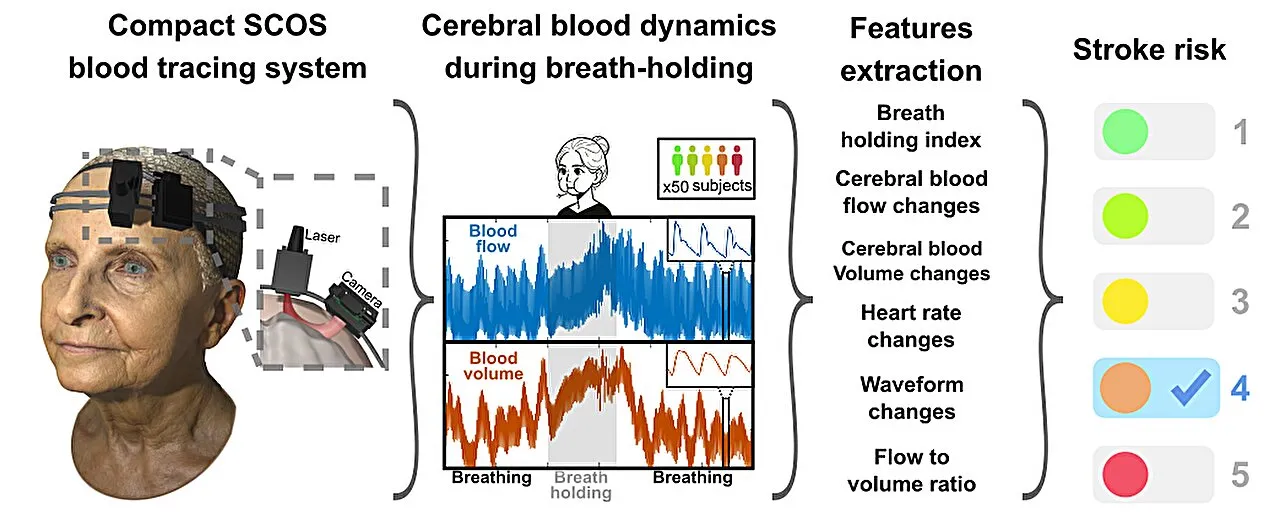Breaking Science News: Innovative Device Predicts Stroke Risk Using Speckle Contrast Optical Spectroscopy

Overview of the Technology
A team of researchers from the Keck School of Medicine of USC and the California Institute of Technology (Caltech) have developed a potential new way to measure a person's stroke risk through a novel headband-like device. This technology harnesses the principles of speckle contrast optical spectroscopy to gather significant data without invasive procedures.
How It Works
The device functions by emitting light onto the skin and analyzing the scattered light patterns to assess blood flow dynamics. By observing changes in these patterns, the device can provide critical insights into the risk of a stroke occurring. This method is advantageous due to its non-invasive nature, potentially allowing for widespread use in various clinical settings.
Implications for Stroke Prevention
- Early Detection: Enables healthcare providers to assess risk factors earlier.
- Patient Convenience: Non-invasive approach enhances patient compliance.
- Cost-Effectiveness: Offers a more affordable alternative to existing stroke risk assessment technologies.
Conclusion: Future Research Directions
Future studies will be crucial to validate the effectiveness of this innovative technology. The research team aims to refine the device's accuracy and expand its applications within preventive medicine.
This article was prepared using information from open sources in accordance with the principles of Ethical Policy. The editorial team is not responsible for absolute accuracy, as it relies on data from the sources referenced.